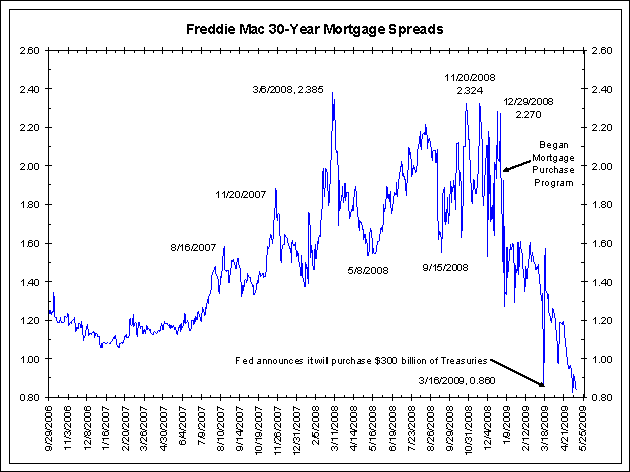- The Financial Times – Short View: Risk appetite
Even though corporate credit remains expensive by historical standards from the point of view of borrowers, the market has eased enough to persuade large companies to issue debt again – plainly a positive development. But returning risk appetite has been bad for government bonds, pushing up their yields. This raises disquieting questions over perhaps the single most crucial area of the credit market: the mortgage market. It is vital for US policymakers to make housing affordable. The lower mortgage rates can be forced, the better the chances of reviving the housing market. Government initiatives of the past year have had their effect in doing this, and the yield on 30-year Fannie Mae mortgage bonds is now only slightly above 4 per cent. But this has been achieved thanks to an extreme tightening of the extra spread that investors pay for mortgages rather than 10-year Treasury bonds, which is now at its lowest level ever. At one point it fell below 0.8 percentage points. Even when confidence was at its peak in 2006 and early 2007, this spread stayed above 1 per cent. The resurgence in cheap mortgage finance, then, appears to rest more on the deliberate intervention of the government than on any returning risk appetite. The higher government bond yields move, the harder this will be to maintain.
Comment
If the story above is true, and the Federal Reserve is content letting the long end of the yield curve rise, it seems as though their goal of lowering mortgage rates may be at risk. As the chart below shows, the spread between the FHLM 30-year mortgage and 10-year yields is 84 basis points. Currently (data through May 6) the Federal Reserve has bought $366 billion of MBS and has the authority to buy up to $1.25 trillion.
Because of this massive buying, anything is possible with this spread, even inversion. So while one would normally not predict mortgage spreads to invert relative to Treasury spreads, remember this is the era of “medicated markets” and “quantitative easing.” Unless the Federal Reserve plans on driving mortgage rates lower than Treasuries, this spread cannot tighten much more than it already has. Once this spread cannot tighten any further, mortgage rates will be at the mercy of the Treasury market.
<Click on chart for larger image>
